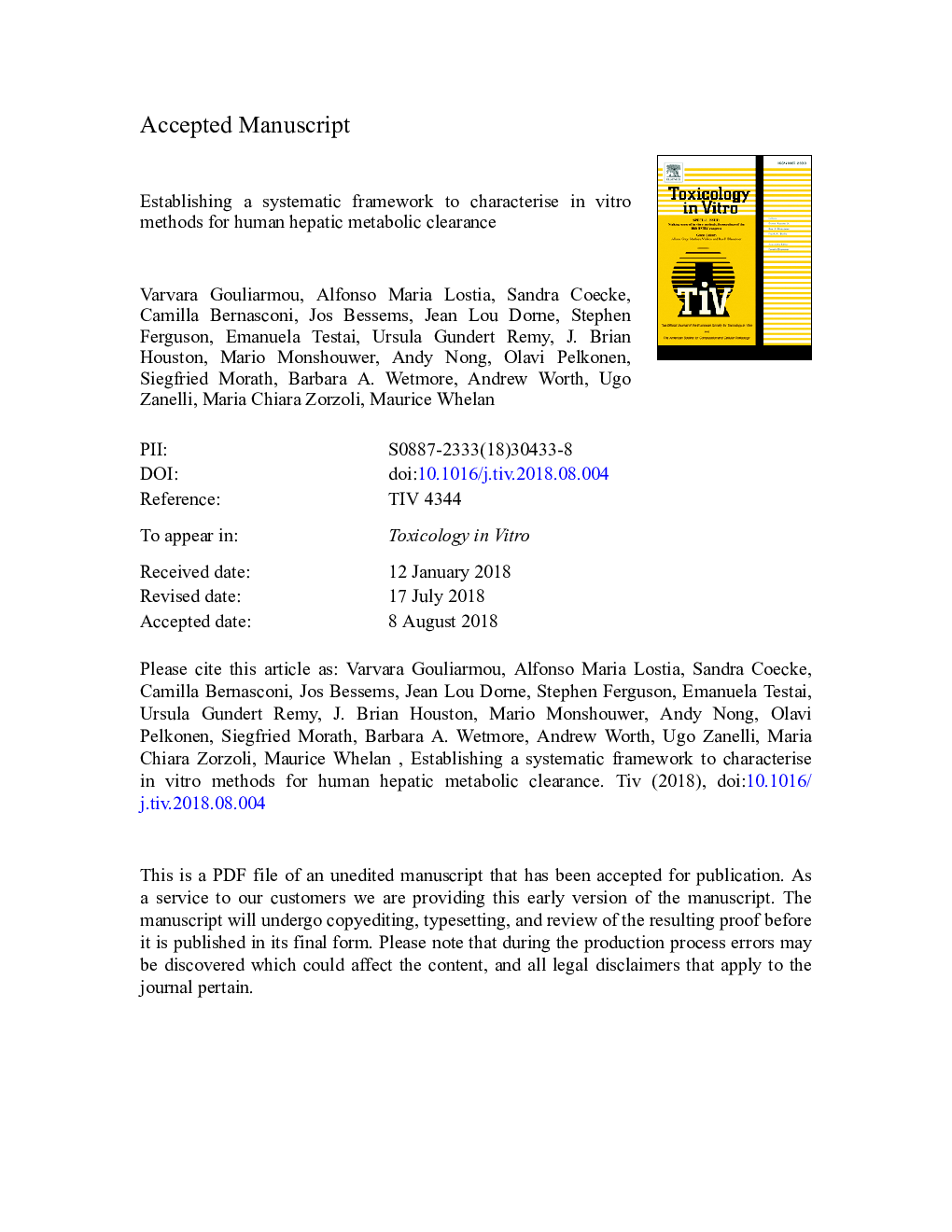| Article ID | Journal | Published Year | Pages | File Type |
|---|---|---|---|---|
| 9955081 | Toxicology in Vitro | 2018 | 46 Pages |
Abstract
Hepatic metabolic clearance is one of the most important factors driving the overall kinetics of chemicals including substances used in various product categories such as pesticides, biocides, pharmaceuticals, and cosmetics. A large number of in vitro systems from purified isozymes and subcellular organelles to hepatocytes in simple cultures and in complex scaffold setups are available for measuring hepatic metabolic clearance for different applications. However, there is currently no approach for systematically characterising and comparing these in vitro methods in terms of their design, applicability and performance. To address this, existing knowledge in the field of in vitro human hepatic metabolic clearance methods was gathered and analysed in order to establish a framework to systematically characterise methods based on a set of relevant components. An analogous framework would be also applicable for non-human in vitro systems. The components are associated with the biological test systems used (e.g. subcellular or cells), the in vitro method (e.g. number of cells, test item solubility), related analytical techniques, data interpretation methods (based on substrate depletion/metabolite formation), and performance assessments (precision and accuracy of clearance measurements). To facilitate the regulatory acceptance of this class of methods, it is intended that the framework provide the basis of harmonisation work within the OECD.
Related Topics
Life Sciences
Environmental Science
Health, Toxicology and Mutagenesis
Authors
Varvara Gouliarmou, Alfonso Maria Lostia, Sandra Coecke, Camilla Bernasconi, Jos Bessems, Jean Lou Dorne, Stephen Ferguson, Emanuela Testai, Ursula Gundert Remy, J. Brian Houston, Mario Monshouwer, Andy Nong, Olavi Pelkonen, Siegfried Morath,
